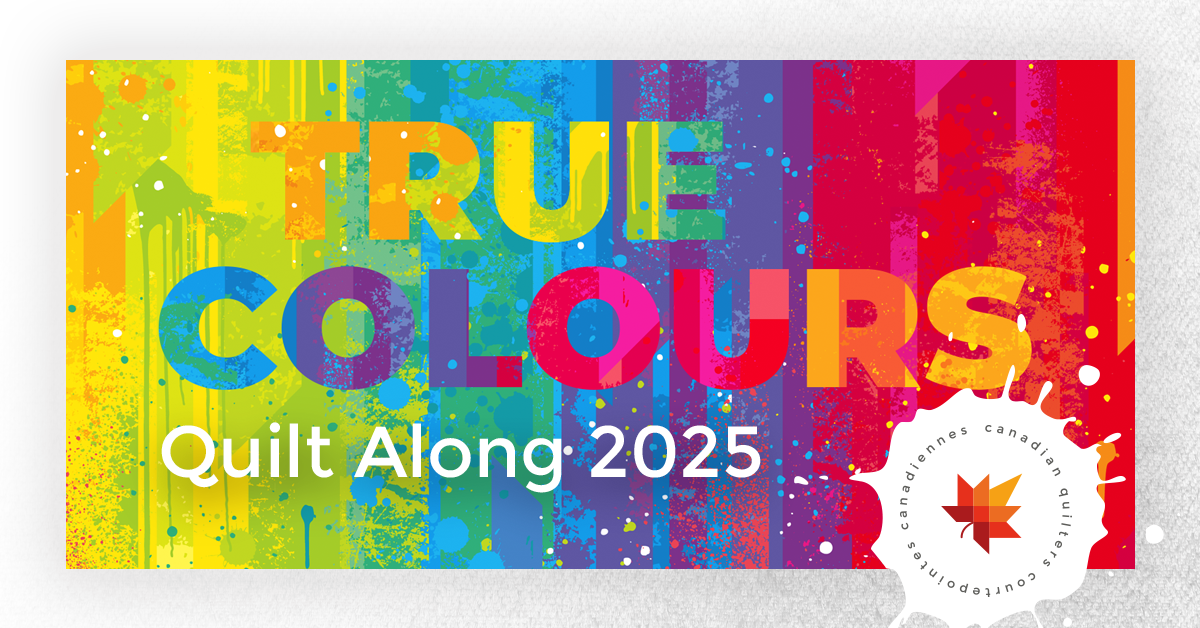As part of the True Colours Quilt Along 2025, CQA/ACC is collecting material for quilters who wish to learn more about the cultural challenges faced by all marginalized people. We can all help to make welcoming and safe spaces for everyone. CQA/ACC invites you to suggest website links to add to our resources by emailing your ideas to membership@canadianquilter.com.
Canada is a multicultural country made stronger and more vibrant by the many peoples who call these lands home. As such, an abundance of traditions are observed and celebrated.
The connections that are created between communities—both real and virtual—provide opportunities for us to learn about and experience the richness of other cultures. Understanding and appreciating each others’ differences and similarities is more important than ever.
What is Cultural Awareness and Sensitivity and how is it developed?
Let’s start with two definitions:
Cultural Awareness—Cultural awareness is the ability to recognise, understand, and appreciate the differences and similarities between cultures. This concept is crucial in today’s increasingly diverse society, where individuals from various backgrounds interact in personal, educational, and professional settings.
Source: The Oxford Review Briefings. Cultural awareness – Definition and Explanation
Cultural Sensitivity—Cultural sensitivity refers to the awareness, understanding, and respect for the cultural differences and practices of individuals from diverse backgrounds.
Source: The Oxford Review Briefings. Cultural sensitivity – Definition and Explanation
What could these cultural similarities and differences look like? First, cultural awareness includes a wide range of aspects to consider. Here are some examples:
- Verbal communication – In some cultures, people prefer direct communication; others indirect. For example, greetings and goodbyes may be different, and humour may be different in how it is used and received.
- Nonverbal cues – Gestures, eye contact, and preferences for personal space vary greatly across cultures. If someone keeps their distance or doesn’t look others directly in the eye, it may be perceived as rude by some, while it is considered polite in their culture.
- Cultural symbols or practices – Understanding culturally significant symbols, religious practices/sayings, clothing, images, etc., is important in order to avoid misunderstandings. Offense may be taken where none is intended.
- Respect for holidays, cultural, and religious events – Understanding and respecting national, provincial/territorial, multinational, and religious holidays and events is important to preserving those traditions, and building safe and welcoming communities.
The first step to developing cultural awareness is to understand your own cultural background, values, and biases. With this information you have a better understanding about yourself and can begin to engage in education through meeting new diverse friends, gain knowledge through respectful dialogue, attend local cultural workshops and events, and broaden your understanding one culture at a time.
Becoming culturally aware does not mean you have to agree with the beliefs, traditions, and cultural practices of others, as there are many cultures that just don’t see eye to eye. This is where cultural sensitivity comes into play! Cultural sensitivity is the awareness, understanding, and respect for such differences. So, this means you don’t have to change your own beliefs or cultural practices in order to appreciate and respect the beliefs and practices of others. A good way to think about this is to keep in mind that other cultures aren’t worse or better than your own; they’re just different!
A Challenge for Quilters
If you already know a quilting method or are learning a method from a culture other than your own (e.g. Kawandi, Sashiko, Kantha, Bojagi), try to find out more about that culture. What are some of the differences between that culture and your own, and how has that culture influenced its traditional creative practices? How is that quilting method similar to or different from your own traditional quilting practice? How has your own culture influenced your quilting traditions?
Bonus Points
Here’s an added challenge for adventurous quilters: Develop a presentation for your guild on what you have discovered during your research about another culture and its influence on creative practices.
What do Cultural Awareness and Sensitivity Have to do with the Quilt Along?
Cultural awareness and sensitivity may not be subjects people directly link to 2SLGBTQIA+ communities, however there are many parallel understandings. Communities are made stronger and more vibrant by the many different individuals within them, whether those differences are based on culture, race, gender, or sexual orientation, etc. Acknowledging our own values and biases is the first step to understanding and appreciating those of others. When you read through the recent blog posts related to the True Colours Quilt Along you’ll recognize a theme: respect for one another, creating inclusive spaces for everyone, and appreciating the value in our differences are what allow us to come together and help ensure that everyone feels welcome in the quilting community.


